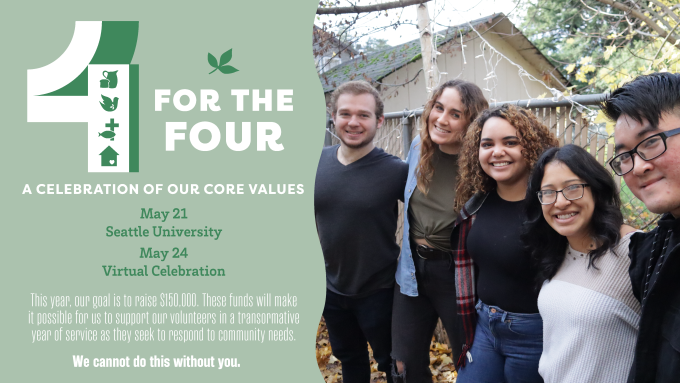Ben Rumbaugh serves in Ashland, MT, as a Dormitory Assistant for St. Labre Indian School. Here he addresses the importance of education for his students and their Native communities.
The St. Labre Indian School provides education and a multitude of resources to children in the nearby Northern Cheyenne and Crow Indian reservations. A significant aspect of attending high school at St. Labre is that a large percentage of students live in the school’s dormitory on campus. This incredible facility enables students from the reservations – some of which live up to 125 miles away – to attend St. Labre. During the school week the dormitory is home for these students, who return to their families on weekends. Consequently, some students travel six hours a week just to attend school!
This astonishing reality raises several questions for me: Why are students going to such great lengths to receive their education at St. Labre? What are the conditions of the tribal schools, which are closer to their homes, that these students choose St. Labre despite the distance? Ultimately, how will their secondary education prepare these students for self-sufficiency so that the cycle of poverty – which is a blatant aspect of life for a number of the students – be broken? Attempting to answer these questions has helped me begin the long process of discerning my time and place with this exceptional community.
My position at the dorm involves supporting residents so that their home-away-from-home is hospitable and sets them up for academic success. This support takes many forms: it can be as stressful as making sure homework is done on time, as fun as cheering for them at sporting events, or as simple as watching a movie with them to unwind after a long day at school. By providing a stable and supportive environment at the dorm, students are prepared to take advantage of St. Labre’s education.
Through building relationships with the students, I have gained a sense of why they chose to attend St. Labre. The most common answer I get is that they come because of the post-secondary scholarship opportunities. Because St. Labre is a private, Catholic institution with an extensive donor base, the school has the resources to offer its graduates scholarships to pursue higher education. For many of the students, the traveling and time away from home is worth this opportunity.
This commitment also highlights the lack of alternative support systems in the area for post-graduation sufficiency. If students have to travel such distances to be guaranteed post-secondary support, then what is that saying about the schools that are closer to their homes? I attended high school in a predominately white, Midwestern community. Comparing my experiences with accounts given from my students, I cannot help but notice discrepancies in the educational system. It makes me wonder about the resources available to tribal schools and subsequently the support they can provide their students. There is a significant need for dialogue with these communities so that problems can be identified and addressed in order to bridge the educational gap.
One problem that has been communicated by the students at the dorm is that they do not know what post-secondary opportunities exist for them. Because of our current system, many students are under the impression that any education after high school involves another four years of college and they are immediately turned off to that much additional schooling; many do not realize that higher education can take many forms whether it be vocational, two-years, four-years, etc.
These conversations have led me to start an initiative that makes resources about post-secondary opportunities available to students who live at the dorm. Placing these resources in their home-away-from-home will allow students the time and atmosphere to consider their potential for education after graduation from St. Labre. With hope, these resources will help students achieve self-sufficiency and, in turn, will create a more stable community.
St. Labre is certainly a unique experience in education. My position at the dorm has given me the opportunity to engage students in a more holistic fashion; I’m not only providing academic support, but also supporting them in a consistent and loving home. Although it’s not perfect (in a home of sixty-plus teenagers, conflict is inevitable), the dorm is an important element in St. Labre’s mission of providing education to the Northern Cheyenne and Crow tribes. There is no doubt that education plays an important role for developing a sustainable community with adequate services. While questions surrounding education can have vague and weighty answers, they highlight a need for dialogue with marginalized communities. I’m learning that this type of dialogue is an important step in finding real, effective solutions towards social justice.





There was a guy name
Conal Fagan